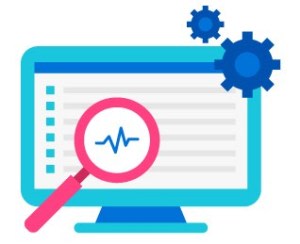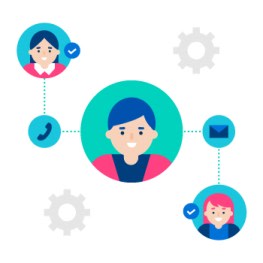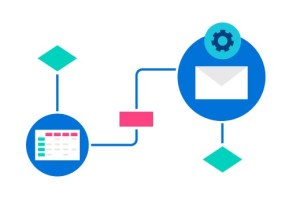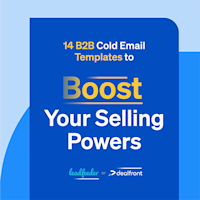Creating a successful sales cadence sounds daunting.
Where do you start when it comes to putting together the system that will nudge prospects towards taking the steps you want them to take?
And what if you put in all the time and research, and then your cadence doesn’t reap the results you need it to?
To be frank, creating a successful sales cadence sounds harder than it actually is.
Will you need to put in plenty of research hours? Yes.
Will you sometimes have to force yourself to follow your contact plan when you would have otherwise given up on a prospect? Yes.
But the important thing is that none of this is wasted time.
During the research phase, you’ll glean valuable information about your ideal prospects. And during the contact phase, sure, not every email or phone call will lead to a sale, but you’ll learn how to tweak your cadence for optimal results.
Ultimately, there’s nothing like a strong sales cadence to encourage your prospects down the sales pipeline.
Here’s how to build one.
1. Define your cadence objective

There’s absolutely no point in setting up your sales cadence without an objective – every touchpoint within the cadence should be nudging your prospect towards a specific goal.
So before you begin considering these touchpoints, you need to answer the following question:
What objective do you want to achieve through your sales outreach cadence?
This objective needs to be both realistic and unintrusive; it should feel natural to prospects. The purpose of your cadence should be the next step that nudges your prospects closer to your end goal.
For instance, this could be scheduling a product demo, setting up a free trial of your product, or arranging a first sales meeting.
2. Understand your prospects and buyers

Of course, one of the most important aspects of sales prospecting is research.
Doing your homework is the best way to really understand your prospects – as every sales rep knows, prospects won’t always just tell you everything you need to know to win them over and best meet their needs.
Therefore, in order to build the perfect sales outreach cadence, you first need to consider who your typical prospect and customer is. You can either collect this data using surveys and chatbots or by extracting them from your existing database.
While normally, when we’re considering how to sell to a prospect, we’re thinking about pain points and the psychology of selling, when it comes to a sales cadence, you need to take more logistical factors into account.
Important facts to discover during this phase include:
Time zone - Which time zone does your prospect sit in, and how different is it to yours?
Geography - Where are they located? Are there any cultural factors to take into account?
Industry - What industry are your target accounts in? How could this affect their time online or their approach to emails?
Seniority - What job title does your typical prospect have? What does this mean in terms of free time?
3. Establish company size

Establishing your prospects’ company size is also of major importance for the effectiveness of your sales cadence. This is mainly due to the fact that the job title you’re targeting, and the way you target that person, will change depending on the scope of the organization.
For example, enterprise clients typically have an established buying process. There’s often a lot of red tape around this process, and you’ll have to fit in with their system if you want to sell to them.
When dealing with SMBs, on the other hand, you can be more creative. These organizations are typically too busy servicing customers – and have too few team members – to have developed complex internal structures.
In these cases, you’ll likely be dealing directly with the company founder or CEO. Typically you’ll find that these deals are pretty low touch – you have the ear of the one and only decision maker, who will sign off if they see the value in what you’re selling. There’s usually little regulation and no big board to convince.
The structure of your sales cadence must therefore change depending on company size. For instance, a survey showed that SMBs overwhelmingly prefer to be contacted by email.
4. Create a sales contact plan
As we’ve discussed above, your sales contact plan will differ depending on the accounts you’re targeting.
They may include:
Social media messages
Voicemails
Emails
The more specific the contact plan, the more likely you’ll be to stick to it.
So during its creation, ensure that you break down your planned contact into daily activity. However, this doesn’t necessarily mean you can only schedule one form of contact each day – instead, consider building in a combination of different sales activities in one day. For example, you could send an email and leave a voicemail in one day.
It’s important to specify the precise number of times you will use each method of contact during the plan, and whatever you do, remember to diversify your channels so you're not relying on one outreach method in your contact plan.
Here’s an example:
Week 1
Day 1: Send a LinkedIn message and a request to connect
Day 4: Call, and send an email
Week 2
Day 1: Call, and if they don’t answer leave a voicemail
Day 4: Send an email and a LinkedIn message
Week 3
Day 1: Call
Day 4: Send a follow-up email with extra information
Week 4
Day 1: Call and leave a voicemail
Day 4: Send an email
5. Timing is important

Getting the timing right is an important sales skill and is all about not annoying your prospect.
As sales reps, we have to master the fine balance between providing enough information and not getting blocked from social media or having our emails sent straight to the junk folder.
This is particularly important at the beginning of the cadence: your prospects are much more likely to feel harassed by your contact before they’ve put a face to the name and realized you’re human.
And the last thing you want is to lose a prospect before you’ve even had the chance to really talk to them. For optimal timing, ensure that you space out your attempts to contact them by at least a day, but don’t let more than four days elapse.
After the first couple of contacts, increase the time between your communications following each attempt. A week or so is a good limit for the maximum time you should wait after repeatedly getting no response.
6. Optimal number of touchpoints

According to a report published by the Online Marketing Institute, it takes on average seven to 13 touchpoints to deliver a qualified sales lead.
Ideally, you want the sales cadence containing these touchpoints to last somewhere from two to four weeks.
So what level of sales engagement should you aim for during this time, and at what point should you give up?
To set yourself up for sales success, aim for between ten and 15 touches for every prospect using your sales cadence. Remember that in reality, most salespeople give up after just one or two attempts, so by sticking to your sales plan you’ll be putting yourself head and shoulders above the competition.
Remember to adjust the sales cadence, too. Once you’ve used it a number of times, you should get a feel for how many touches are optimal for your audience.
Conclusion
As Voltaire once (allegedly) said, “perfect is the enemy of good.”
So when it comes to building your sales outreach cadence, you just have to start. At first, it won’t be perfect, and there will no doubt be a handful of missteps along the way.
But these missteps are super important when it comes to honing your sales cadence, which is what's going to get it as close to perfect as possible.
And once it’s there, your sales game is going to climb to the next level.
Now that you're here
Leadfeeder is a tool that shows you companies that visit your website. Leadfeeder generates new leads, offers insight on your customers and can help you increase your marketing ROI.
If you liked this blog post, you'll probably love Leadfeeder, too.
Sign up


![How to Maximize Your Sales With Leadfeeder [Webinar]](http://images.ctfassets.net/plii0v5gbc4s/3z1uKAAU3OECXj41fa8jic/a3b8b3c211657fd51841a5120569c930/Copy_of_lead-generation-without-cold-calls.png?w=686&q=80)




